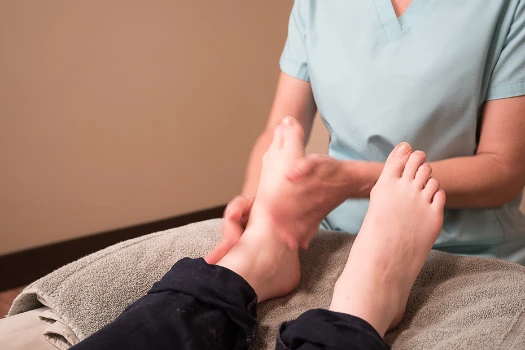What to Expect From Your First Reflexology Appointment
Friday, September 14, 2018, 10:30 AM
Reflexology is an ancient therapy that focuses on healing in the body by activating different reflex points found in the hands and feet. Pressing on the different points in the hands and feet causes reflex responses in corresponding parts of the body, which can help promote healing.

Reflexology is an effective therapy that can help treat various issues from headaches and tension to menstrual cramps and insomnia. So, if you have never had a reflexology treatment before, here is what you can expect.
What is Reflexology?
Reflexology is based on the idea that the glands, organs, and parts of the body are reflected in specific reflex areas on the hands, feet, and ears. Applying pressure to these specific points can reduce pain and anxiety and promote circulation, relaxation, and healing in the body.
The most common form of reflexology is foot reflexology. The stimulation of reflex areas in the foot triggers a response in corresponding organs, promoting healing in that area of the body.
What Does Reflexology Treat?
Reflexology is reported to be effective in reducing tension and stress throughout the body by initiating the relaxation response. It also is effective at improving nerve and blood supply throughout the body by facilitation the functioning of the nervous and circulatory system.
Reflexology also helps the body to normalise by promoting balance and a state of harmony between the body, mind and emotions. It is also beneficial for issues relating to reproduction and fertility, digestion, anxiety, and insomnia.
Reflexology does not treat specific conditions and is not a substitute for medical treatment and care. Reflexologists do not diagnose illness based on the treatment they provide.
What to Expect from Your First Appointment
A reflexology session generally starts with an overview of your medical history with the reflexologist. This ensures the practitioner understands your needs and concerns and is aware of any underlying health conditions you may have.
Next, you will sit in a comfortable chair or lay on a massage table. Clients remain fully clothed during treatments except for the feet and lower leg.
After sanitizing the feet, the reflexologist will then activate the reflex points on the hands, feet, and ears that correspond with one side of the body, and continue to the other side until the whole body has been treated.
If a reflexologist finds pain, tightness or energetic blockage in any of the reflex points, they will apply pressure to that area to promote healing elsewhere in the body.
The reflexologist will often end the session in a way that calms and relaxes the client. Don’t feel rushed to bring yourself back to the present moment too quickly. Take a moment to enjoy your relaxed state. Often the reflexologist will recommend that you drink water and rest as necessary following treatment.
How Will You Feel After Your Treatment?
Different reactions following the reflexology session are normal. You may experience increased energy, relief from pain or other symptoms, tiredness, increased mucus, enhanced sleep, and heightened emotions.
What Reflexology Feels Like
Reflexology feels different to each person. Generally, clients feel relaxed and sometimes even fall asleep during a treatment. Other normal reactions to reflexology include increased sweating in the hands or feet, light-headedness, increased emotions, thirst, coughing, and exhaustion.
Clients may feel slight pain when muscle groups that are being stimulated contract. When sensitive reflex points are activated, it may feel like a bruise, comforting pressure, and warmth in the corresponding area of the body.
How Often Should You Get Treated?
Your practitioner will advise how often you should receive treatment based on your health concerns and wellness goals. However, because the benefits of reflexology are more subtle and build over time, having frequent sessions is advised, especially if you are new to the practice.
A general recommendation is to schedule an appointment once a week for the first six to eight weeks, then to schedule follow-up appointments every few weeks after that.
Learn more about reflexology in the Holistic Health Guide or find a practitioner in your area using the NHPC Member Directory.

